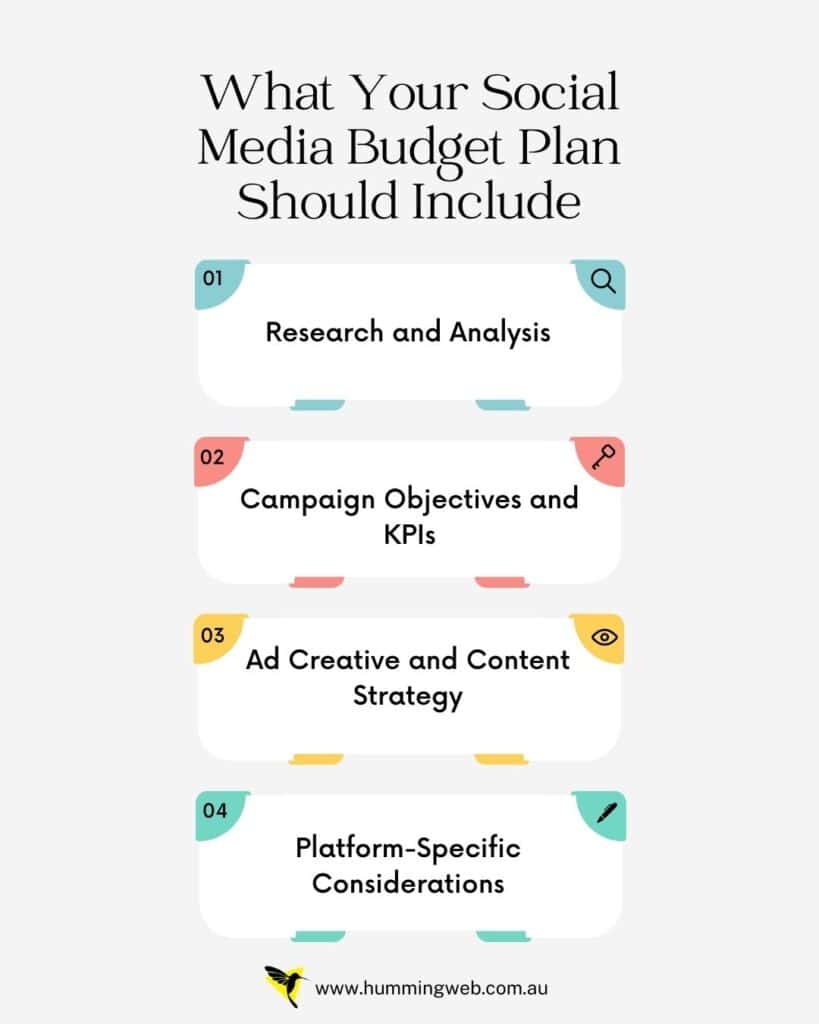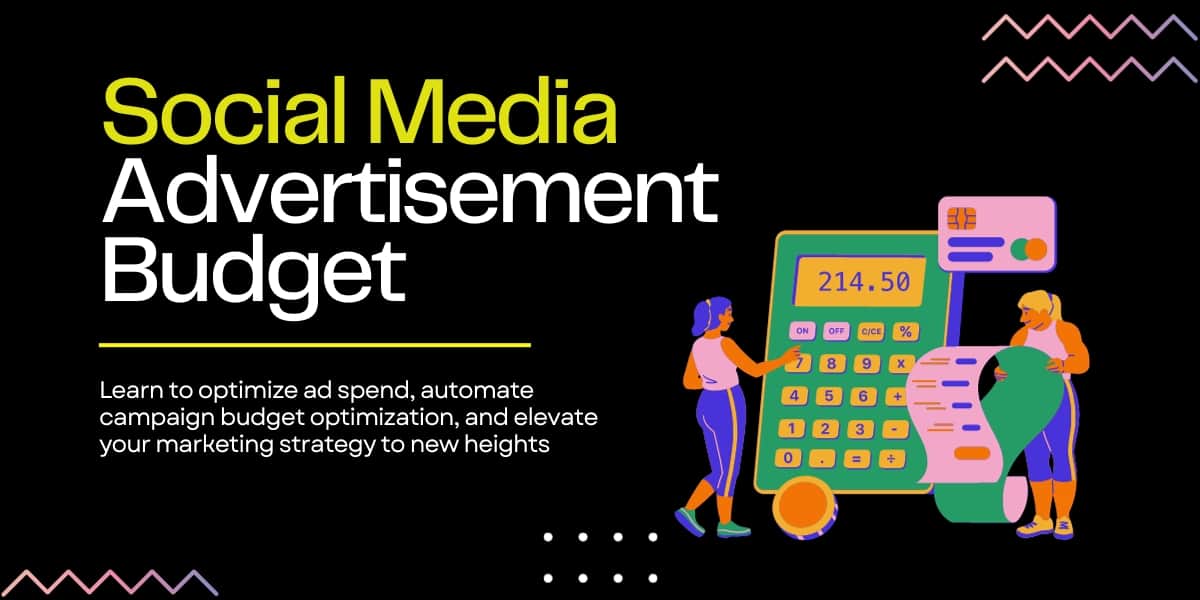In the ever-evolving landscape of digital marketing, social media advertising has become an indispensable tool for businesses aiming to connect with their target audience. However, the success of a social media ad campaign hinges on more than just eye-catching creatives and compelling copy. A well-thought-out budget is the backbone of any successful advertising effort, ensuring that every dollar spent contributes to achieving specific business objectives. In this comprehensive guide, we’ll delve into the intricacies of social media advertisement budgets, exploring how to allocate funds effectively, optimize campaigns, and maximize ROI.
How Much Should Your Social Media Advertisement Budget Be?

Determining the appropriate fund for your social media advertising endeavors is a critical first step. Several factors come into play, influencing the decision-making process for the sponsor.
1. Business Goals and Objectives: Your fund should be aligned with your broader business goals. Whether your aim is brand awareness, lead generation, or direct sales, understanding the desired outcome is paramount.
2. Target Audience and Platform Selection: Different platforms attract distinct demographics. Knowing your target audience and selecting the right platforms for your business are crucial considerations when assigning your budget.
3. Industry Benchmarks and Competitors: Researching industry benchmarks and monitoring your competitors can provide valuable insights. Understanding the standard ad spend in your industry helps you set realistic budget expectations.
Balancing between cost-effectiveness and desired outcomes is an ongoing challenge for advertisers. It’s not just about spending more but spending wisely to achieve the desired impact.
What Your Social Media Budget Plan Should Include

A successful social media budget plan involves more than just throwing money at ads. It requires a strategic approach encompassing research, analysis, clear objectives, and a well-defined content strategy.
1. Research and Analysis:
– Conduct thorough market and competitor analysis to identify trends and opportunities.
– Profile your audience and segment them based on their preferences, behavior, and demographics.
– Select platforms based on audience behavior and engagement patterns.
2. Campaign Objectives and KPIs:
– Clearly define your campaign objectives using the SMART goals framework.
– Identify key performance indicators (KPIs) that align with your objectives to measure success.
3. Ad Creative and Content Strategy:
– Assign a budget for high-quality visuals and compelling copywriting.
– Implement A/B testing to optimize innovative elements for maximum impact.
4. Platform-Specific Considerations:
– Understand the unique features and requirements of each platform.
– Tailor your budget allocation to match the expected return on investment for each platform.
Implementing campaign budget optimization allows sponsors to automatically distribute their assigned budget across different ad sets within a campaign, ensuring optimal performance and resource asignment throughout the entire social media advertising strategy.
Creating Your Social Media Budget Plan: Step-by-Step Guide
1. Establishing a Baseline:
– Review past performance data and insights to understand what worked and what didn’t.
– Identify areas for improvement and set a baseline for future campaigns.
2. Goal Setting:
– Use the SMART goals framework (Specific, Measurable, Achievable, Relevant, Time-bound) to set clear objectives.
– Ensure your goals align with broader business objectives for a cohesive strategy.

3. Allocating Budget Across Platforms:
– Determine the most effective platforms for reaching your target audience.
– Asign the budget proportionally based on the expected return on investment for each platform.
4. Daily, Weekly, and Monthly Breakdowns:
– Break down your budget to manage daily spending effectively.
– Regularly review and adjust budgets on a weekly and monthly basis based on campaign performance.
5. Contingency Planning:
– Set aside a buffer for unforeseen circumstances or opportunities.
– Adapt your budget in real time based on the evolving needs of your campaigns.
Optimize Your Marketing Budget
In the dynamic realm of digital marketing, mastering the art of budget optimization is paramount. One of the most effective strategies, especially in platforms like Google Ads and Facebook, is Campaign Budget Optimization (CBO). This feature empowers sponsor to efficiently distribute their daily budget across multiple ad sets within a campaign. By doing so, CBO maximizes the overall impact of your marketing efforts.
When diving into the optimization process, consider your bid strategy and ensure it aligns with your goals. Whether you’re aiming for conversions or brand awareness, a well-thought-out bid strategy enhances your Return on Ad Spend (ROAS). It’s not just about the daily budget; it’s about the strategic allocation of resources across ad sets. This approach allows you to focus on what works, redirecting funds from underperforming areas to those yielding better results.
Moreover, understanding your target audience is crucial. Tailoring your campaign to resonate with the specific interests and behaviors of your audience ensures a higher engagement rate. Whether you’re orchestrating a Google Ads or a Facebook ad campaign, optimizing at the campaign level ensures a cohesive strategy that resonates with your audience, ultimately driving better results. As you explore ways to optimize your marketing, remember that effective budget management, coupled with a deep understanding of your audience, propels your campaign toward success.
Conclusion
In the world of social media advertising, mastering your budget is the key to unlocking the full potential of your campaigns. By carefully allocating resources, setting clear objectives, and staying agile in response to changing dynamics, advertisers can navigate the complex landscape of social media and achieve optimal results. Remember, it’s not just about spending, but about spending strategically to maximize the impact of every dollar invested in your Facebook ads or other social media platforms. Embrace these best practices, automate where possible, and watch as your social media advertising efforts not only convert but thrive in an ever-evolving digital ecosystem.


